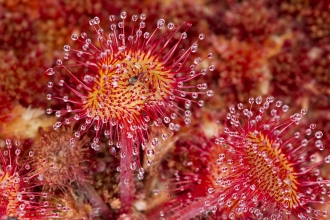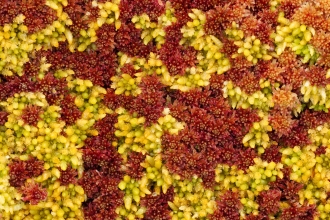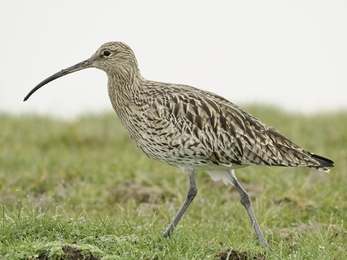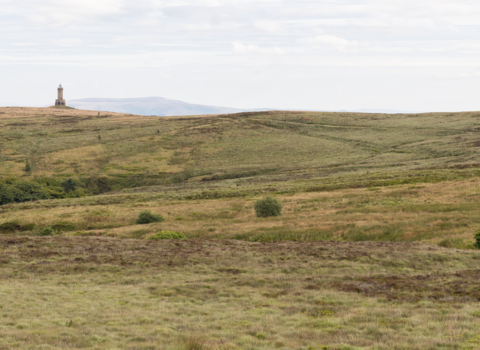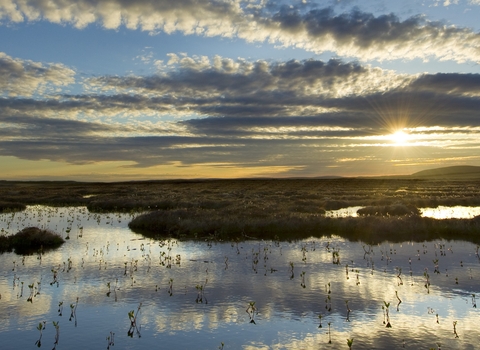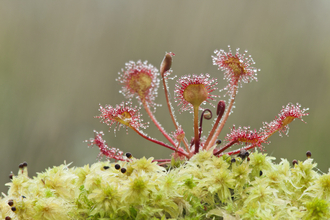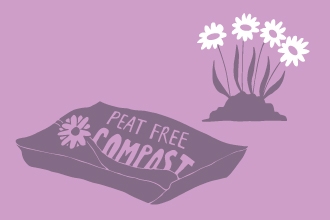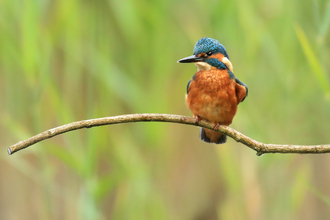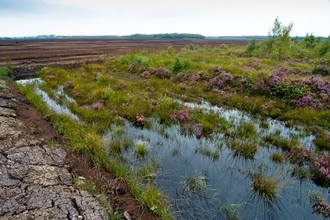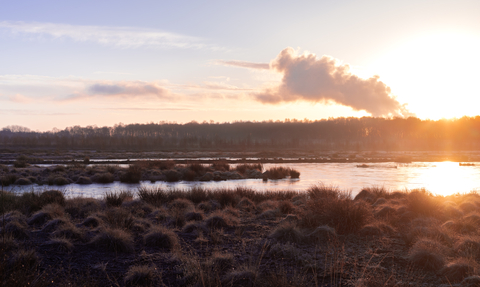
A frosty Little Woolden Moss - Credit: A.J.Critch Wildlife
Restoring our precious peatlands
What is a peatland?
Healthy peatlands are wet and boggy. Combined with low oxygen conditions, this moisture means plant material doesn't rot and is instead compressed into acidic peat soil. The soil has very few nutrients; specialist conditions that nurture a range of important plants that have perfectly adapted to survive in this unique environment.
Why are peatlands so important?
Thanks to the wet, acidic, low nutrient conditions, peatlands have the ability to store millions of tonnes of carbon dioxide that has been absorbed over thousands of years, helping in the fight against climate change. Not only that, but they reduce the risk of flooding by soaking up water during periods of high rainfall and help reduce the risk of wildfires during heatwaves. By contrast, a degraded peatland actively leaks carbon into the atmosphere and contributes heavily to our climate crisis.
Save our peatlands (https://www.youtube.com/watch?v=Dd0cg4zhFv0&t=3s)
Standby Productions have produced an amazing film highlighting why we need to save our peatlands

The wildlife of our peatland habitats
Our peatlands are home to an array of specialist wildlife that have perfectly adapted to the unique and hostile environment of a peatland. From large heath butterflies and bog bush crickets, to the incredible carnivorous sundew and spongey sphagnum mosses, peatlands have a tremendous array of fascinating wildlife to offer.
Unfortunately a lot of the plants and wildlife that live on peatlands are under threat due to habitat destruction. Because they are such specialists in their habitat, they have nowhere else to go. Once our peatlands are gone, the wildlife that live on them will go too.
Nearly one in six UK species are threatened with extinction
State of Nature Report 2023
Why are peatlands under threat?
98% of the lowland peatlands across Lancashire, Greater Manchester and North Merseyside have already been destroyed, and the precious 2% that remain face serious threats from all corners:
- Draining: Removing moisture upsets the delicate peatland ecosystem and can very quickly turn it back into grassland or woodland. The peatland flora and fauna, adapted for the previous environment, then struggles to survive.
- Agriculture: Fertilisers add nutrients to the low nutrient soil. These are then very difficult if not impossible to remove, permanently decreasing the area of peatland habitat.
- Development: As lowland habitats, there is a lot of pressure for lowland peatlands to be taken over by housing and infrastructure.
- Misinformation: Historically, people placed little value on peatland habitats, seeing them as unproductive wastelands, and this preconception has endured.
98% of the lowland peatlands across Lancashire, Greater Manchester and North Merseyside have already been destroyed

Little Woolden Moss during peat extraction - Credit Matthew Roberts (left) Little Woolden Moss during peat restoration - Credit A.J.Critch Wildlife (right)
How we're saving peatlands
Restoring and protecting our precious peatlands is crucial not just for wildlife, but for us. They are nature reserves, carbon-stores, flood barriers and a wild reminder of a time before man-made pressures took hold. Once a peatland has degraded past a certain point it cannot be restored, and this precious wild place will be lost forever.
Our reserve staff, conservation team, volunteers and project leaders are working hard to re-wet the peatland landscape, building dams and bunds to raise the water levels and begin the restoration process.
We're working with landowners to improve the condition of the peatlands they own, and we campaign for the protection of key peatland sites.
We purchase key peatland sites to protect them from destruction, restoring them and then maintaining them through continuous monitoring. We're dedicated to preserving these precious habitats for future generations of both people and wildlife.
Take a closer look at our peatland sites
Together we can protect our peatlands for wildlife, for people; for everyone.
How you can help
Here are just a few ways you can help our peatlands recover...
What is happening in your region?
We work a wide range of projects on peatlands across Lancashire, Manchester and North Merseyside. Check out what is happening in your region.
Greater Manchester
2024
- The medical marvels of our mosslands (https://www.lancswt.org.uk/blog/alex-critchley/medical-marvels-our-mosslands-can-peatland-plants-be-beneficial-our-health)
- Damaged peatland reconnected with boggy neighbour (https://www.lancswt.org.uk/news/damaged-greater-manchester-peatland-be-reconnected-its-boggy-neighbour)
- Dave Steel's 30 Days Wild (https://www.lancswt.org.uk/blog/dave-steel/surprise-curlew-fluffy-owlet-and-then-500-starlings-dave-steels-30dayswild)
- Can you grow lettuce on a bog? Open The Rindle wetter farming trial configurati… (https://www.lancswt.org.uk/news/can-you-grow-lettuce-bog)
- Drone seed sowing at the bulrush wetter farming trial (https://www.lancswt.org.uk/news/drone-seed-sowing-bulrush-wetter-farming-trial)
- Manchester wetter farming trial receives funding to continue vital climate chan… (https://www.lancswt.org.uk/news/manchester-wetter-farming-trial-receives-funding-continue-vital-climate-change-work?fbclid=IwY2xjawFeMCZleHRuA2FlbQIxMAABHfvgtiDAuChNyld4ySpaTuDT92i1UQiWvlKNefzYoD3ov6ijCzteFypoFg_aem_uEto8Nh_3d7y54wKfsBJNA)
2023
- A mossland Christmas tree - Dave Steel's #12DaysWild (https://www.lancswt.org.uk/blog/dave-steel/mossland-christmas-tree)
- A surprise from my youth - Dave Steel's #12DaysWild (https://www.lancswt.org.uk/blog/dave-steel/surprise-my-youth)
- Turf production: peat extraction by stealth (https://www.lancswt.org.uk/blog/jenny-bennion/turf-production-peat-extraction-stealth)
- The peatlands of my childhood (https://www.lancswt.org.uk/blog/alan-wright/peatlands-my-childhood)
- Boggy bulrushes to BioPuff® – re-wetting phase complete! (https://www.lancswt.org.uk/news/boggy-bulrushes-biopuffr-re-wetting-phase-complete)
- Precious peatland saved from housing development threat (https://www.lancswt.org.uk/news/precious-peatland-saved-housing-development-threat)
- Are bulrushes the answer to sustainable clothing and farming? (https://www.lancswt.org.uk/news/are-bulrushes-answer-sustainable-clothing-and-farming)
- Rare Manchester argus butterflies flourishing after reintroduction (https://www.lancswt.org.uk/news/rare-manchester-argus-butterflies-flourishing-after-reintroduction)
- Boggy blueberries battling climate change (https://www.lancswt.org.uk/news/boggy-blueberries-battling-climate-change)
- A Bog's Life tells the tale of a beloved Manchester peatland (https://www.lancswt.org.uk/news/bogs-life-tells-tale-beloved-manchester-peatland)
2022
- Nature friendly farming at our Rindle wetter farming trial (https://www.lancswt.org.uk/blog/jenny-bennion/nature-friendly-farming-our-rindle-wetter-farming-trial)
- Could celery help fight climate change? (https://www.lancswt.org.uk/blog/jenny-bennion/could-celery-help-fight-climate-change)
- Maximising Manchester’s Mosslands (https://www.lancswt.org.uk/news/maximising-manchesters-mosslands)
Lancashire
2024
- The beauty of bunds: Peatland restoration on Darwen Moor (https://www.lancswt.org.uk/blog/alex-hubberstey/beauty-bunds-peatland-restoration-darwen-moor)
- My first encounter with the rare large heath butterfly Open Related blog posts … (https://www.lancswt.org.uk/blog/alex-critchley/my-first-encounter-rare-large-heath-butterfly)
2023
- For the love of peat - The National Trust (https://www.lancswt.org.uk/blog/guest/love-peat)
- Sundews: What's that on the Lancashire Peat Partnership logo? (https://www.lancswt.org.uk/blog/jenny-bennion/sundews-whats-lancashire-peat-partnership-logo)
- Wildfires on peatlands (https://www.lancswt.org.uk/blog/jenny-bennion/wildfires-peatlands)
- Bogs are boring right? (https://www.lancswt.org.uk/blog/jenny-bennion/bogs-are-boring-right)
- Lost carnivores return to Winmarleigh Moss (https://www.lancswt.org.uk/news/lost-carnivores-return-winmarleigh-moss)
- Restoring the Lancashire Red Rose Peatlands Open Related news configuration opt… (https://www.lancswt.org.uk/news/restoring-lancashire-red-rose-peatlands)
2022
- Funding secured to bring lost plants back to Winmarleigh Moss (https://www.lancswt.org.uk/news/funding-secured-bring-lost-plants-back-winmarleigh-moss)
- Vital funding secured for the ‘discovery’ of North West’s peatlands (https://www.lancswt.org.uk/news/vital-funding-secured-discovery-north-wests-peatlands)
- Winmarleigh carbon farm chosen as handover location for world’s longest ever at… (https://www.lancswt.org.uk/news/winmarleigh-carbon-farm-chosen-handover-location-worlds-longest-ever-attempted-relay)


